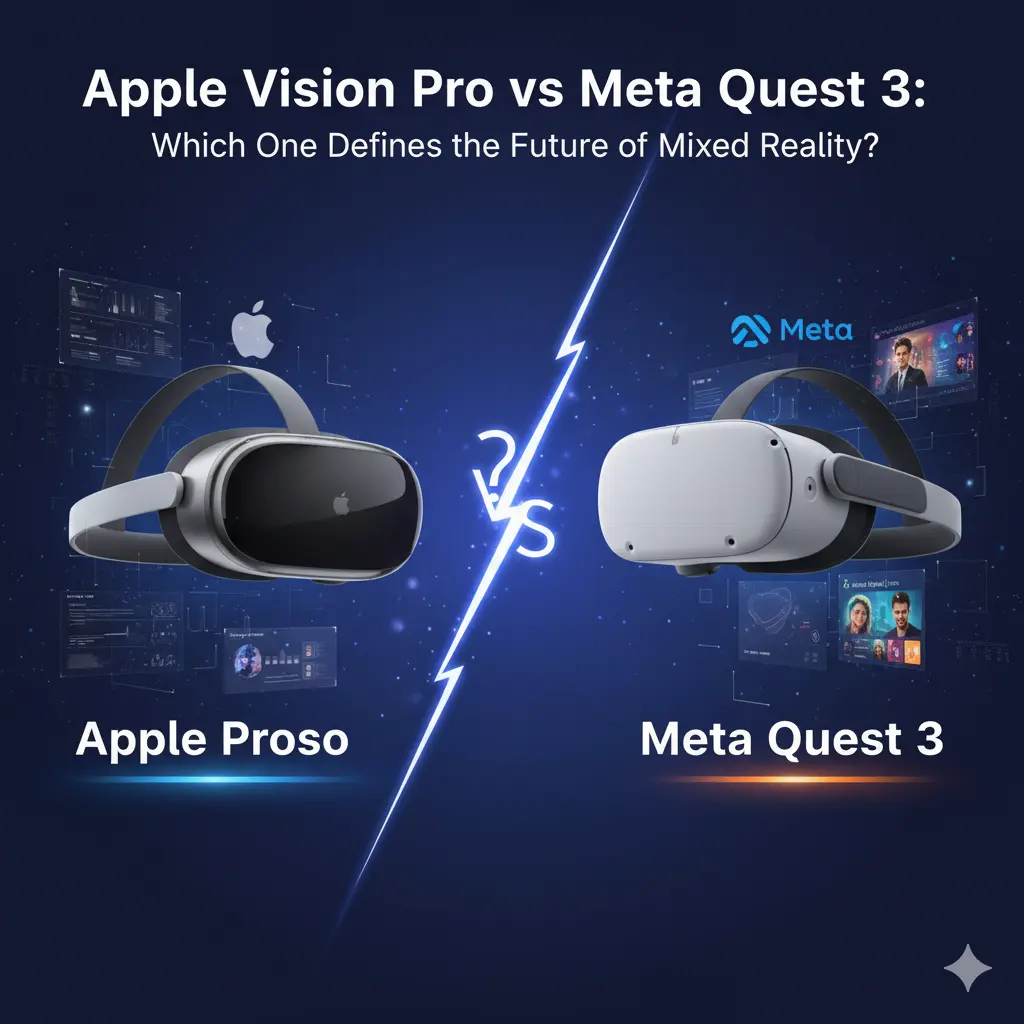
The mixed reality (MR) landscape is rapidly evolving, and two headsets stand out: Apple’s Vision Pro and Meta’s Quest 3. Both represent significant advancements in spatial computing, but they cater to different audiences and use cases. This comparison examines their design, performance, ecosystem, and overall value to see which headset is shaping the future of MR.
Design and Comfort
Apple Vision Pro features a premium build with aluminum and glass, offering a sleek, futuristic look. It has a relatively narrow field of view and weighs between 600–650 grams. The Vision Pro also uses an external battery pack, which can be cumbersome during long sessions.
Meta Quest 3 is lighter at approximately 515 grams and uses a plastic frame. Its design emphasizes comfort, with a wider field of view and balanced weight distribution. The Quest 3’s battery is integrated, eliminating the need for external power sources.
Display and Visual Quality
The Vision Pro uses micro-OLED displays, delivering exceptional clarity, color accuracy, and realism. Virtual elements blend seamlessly with the real world, offering a highly immersive MR experience.
The Quest 3 uses LCD panels with a per-eye resolution of 2064×2208p. While the visuals are solid and enjoyable, they do not match the Vision Pro’s premium display quality.
Performance and Usability
Apple Vision Pro is powered by the M3 chip, ensuring smooth operation for demanding applications. It supports multitasking with multiple apps and integrates well with macOS, making it suitable for professional users.
Meta Quest 3 uses the Snapdragon XR2 Gen 2 chipset, providing impressive performance for its price. It handles a wide range of applications from gaming to productivity but may fall short of the Vision Pro in high-end professional scenarios.
Ecosystem and Software
The Vision Pro benefits from Apple’s robust ecosystem, including iOS and macOS apps. Its integration with productivity tools and creative software makes it ideal for professional and enterprise use.
The Quest 3 operates within Meta’s ecosystem, offering a wide range of VR and MR applications. It focuses on entertainment, gaming, and social interaction, providing a user-friendly experience for casual and mainstream users.
Price and Value
The Vision Pro is a premium device priced at $3,499, targeting professionals and enthusiasts willing to invest in cutting-edge MR technology.
The Quest 3 starts at around $500, making it much more accessible to consumers who want a quality mixed reality experience without spending a premium.
Conclusion
Both headsets are shaping the future of mixed reality. The Vision Pro excels in display quality, performance, and professional integration, making it perfect for those seeking a high-end MR experience. The Quest 3 offers affordability, solid performance, and entertainment-focused features, making it a great entry point for most users.
Ultimately, the choice depends on individual priorities. Professionals and Apple ecosystem users may prefer the Vision Pro, while casual consumers and gamers will find the Quest 3 an excellent option. Both devices contribute to the ongoing evolution of mixed reality in unique ways.



